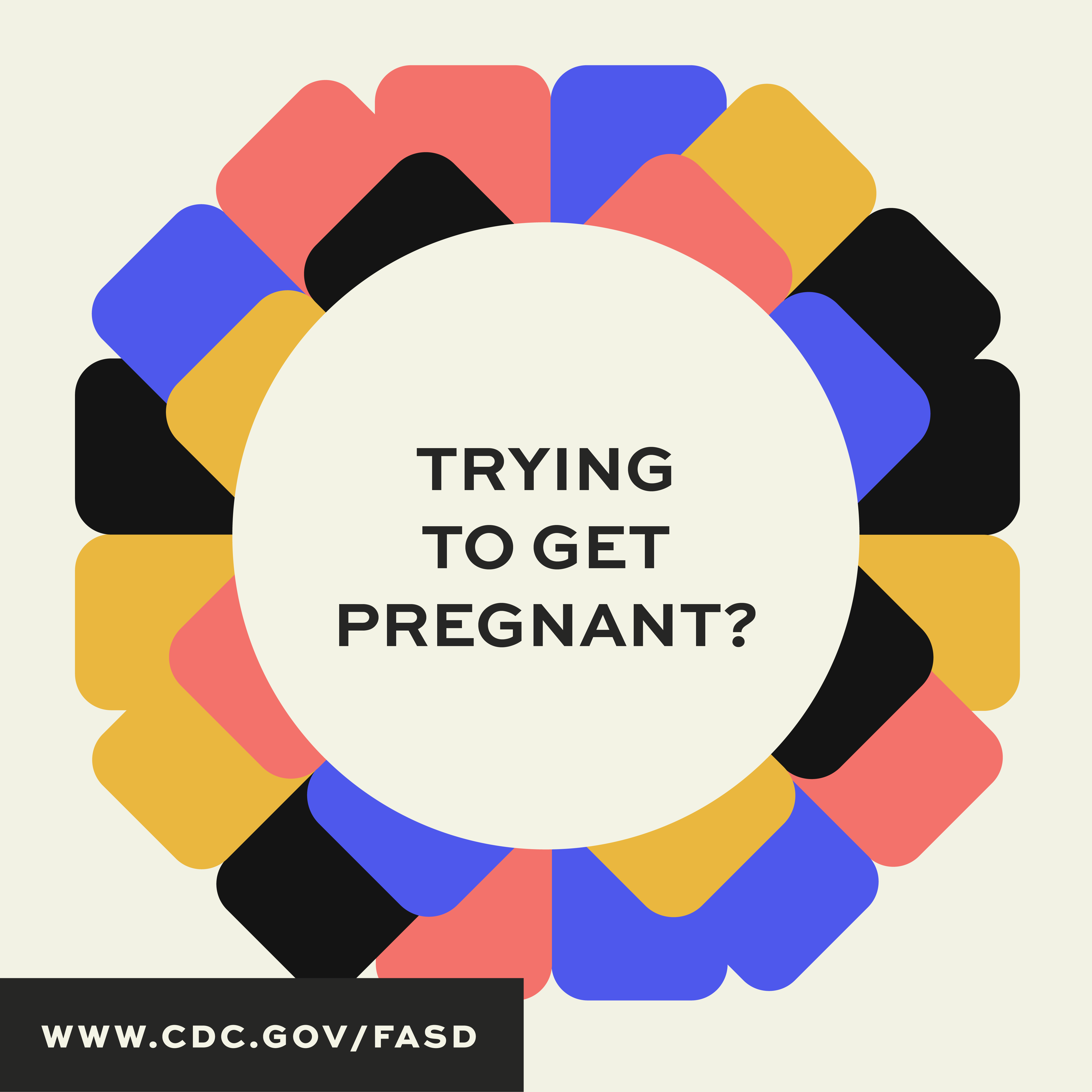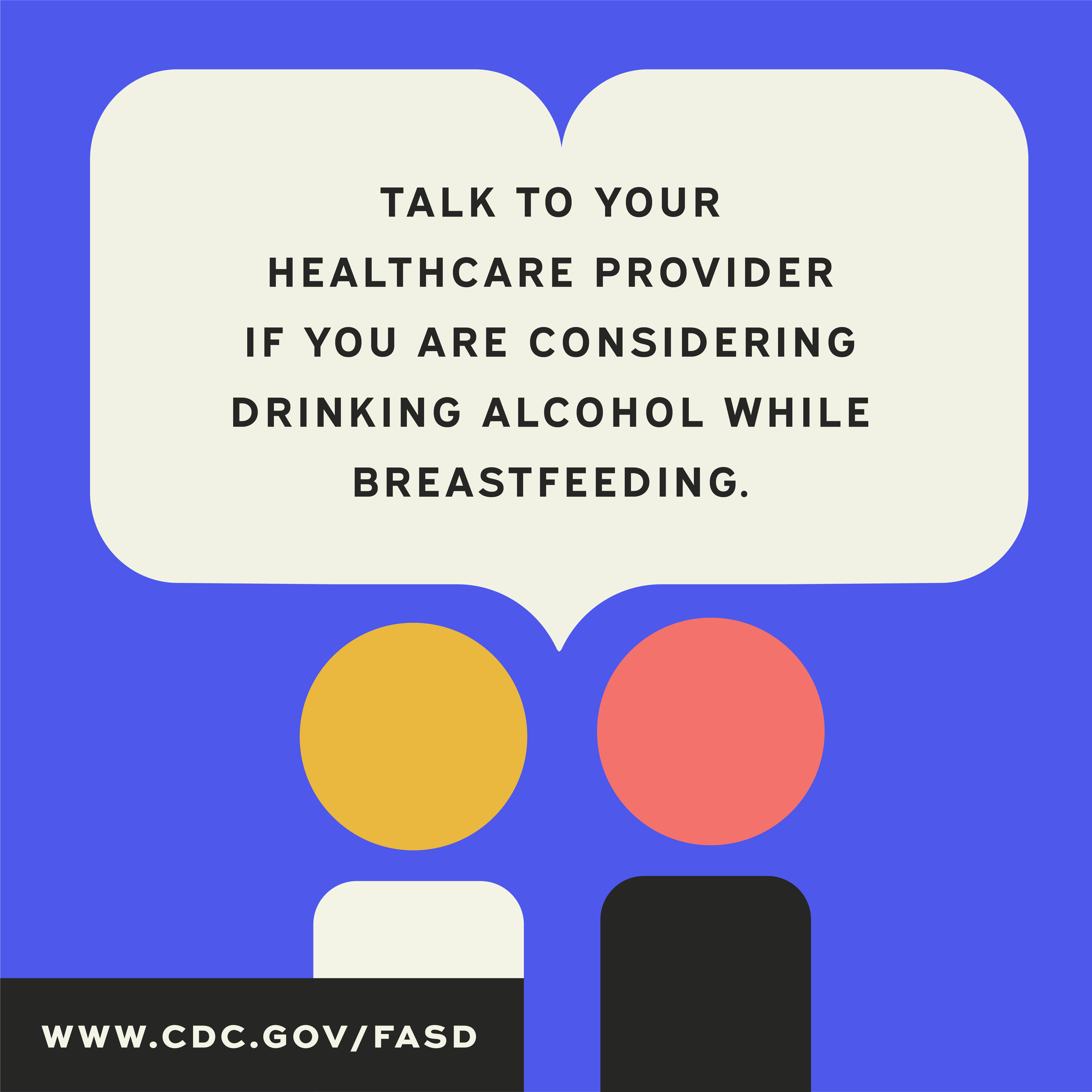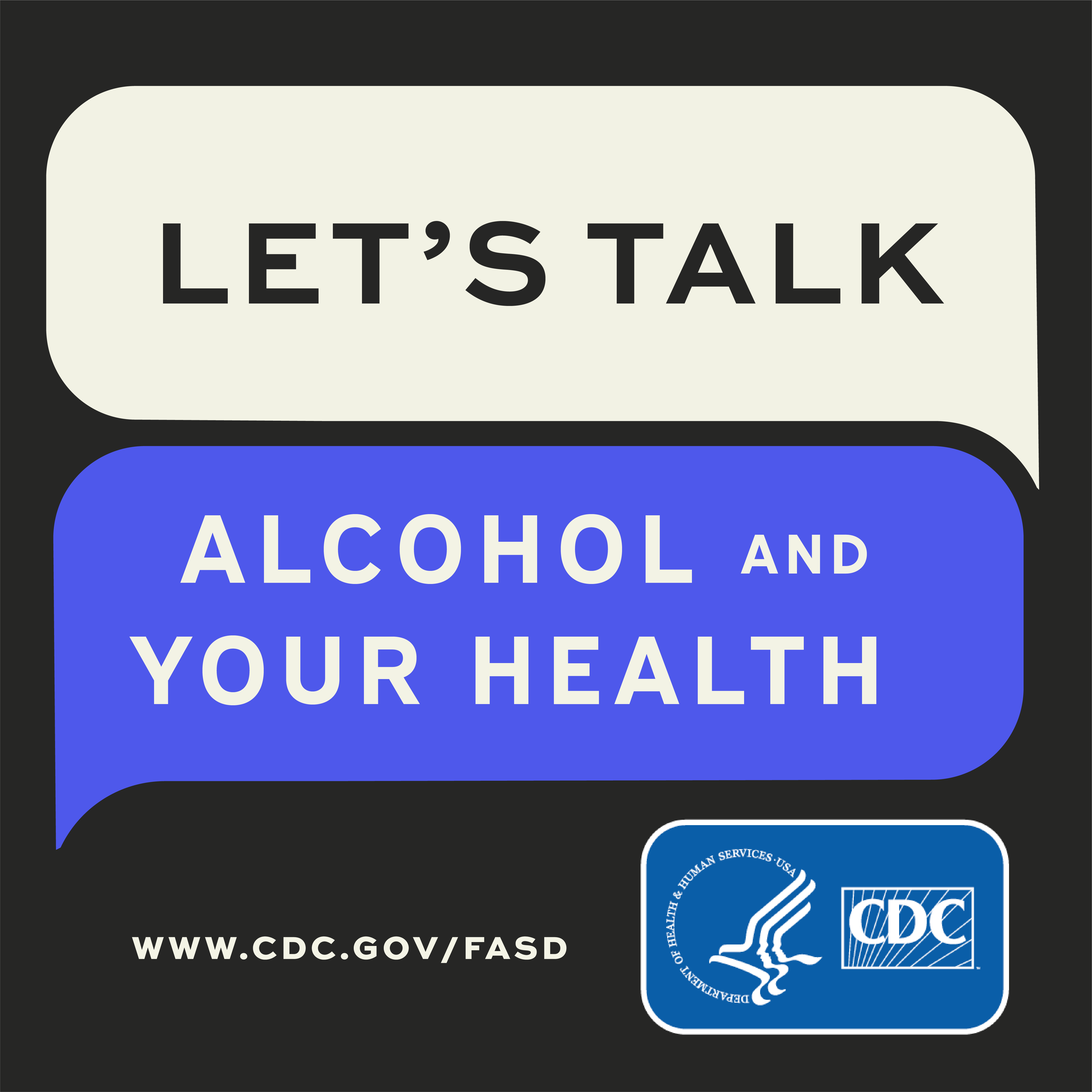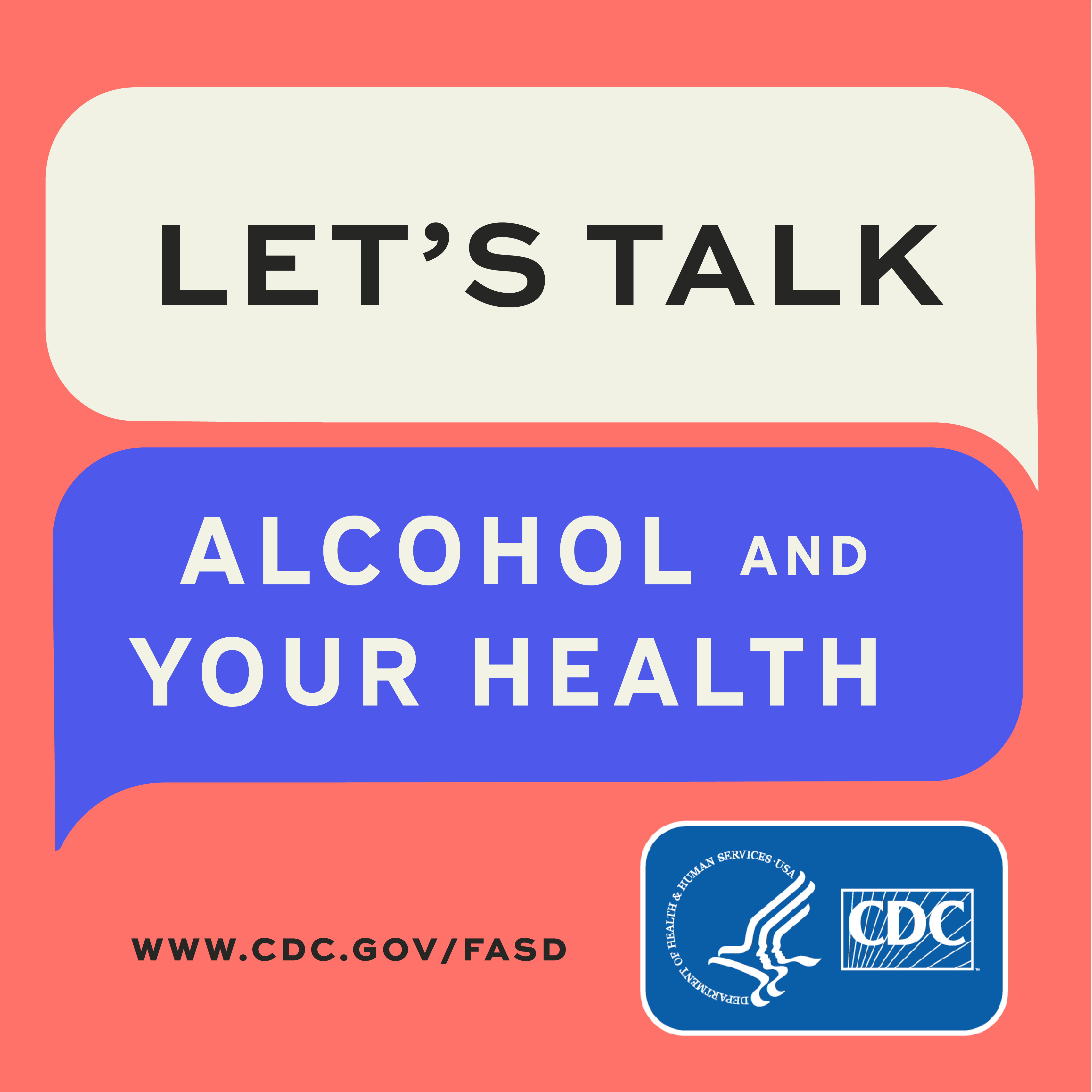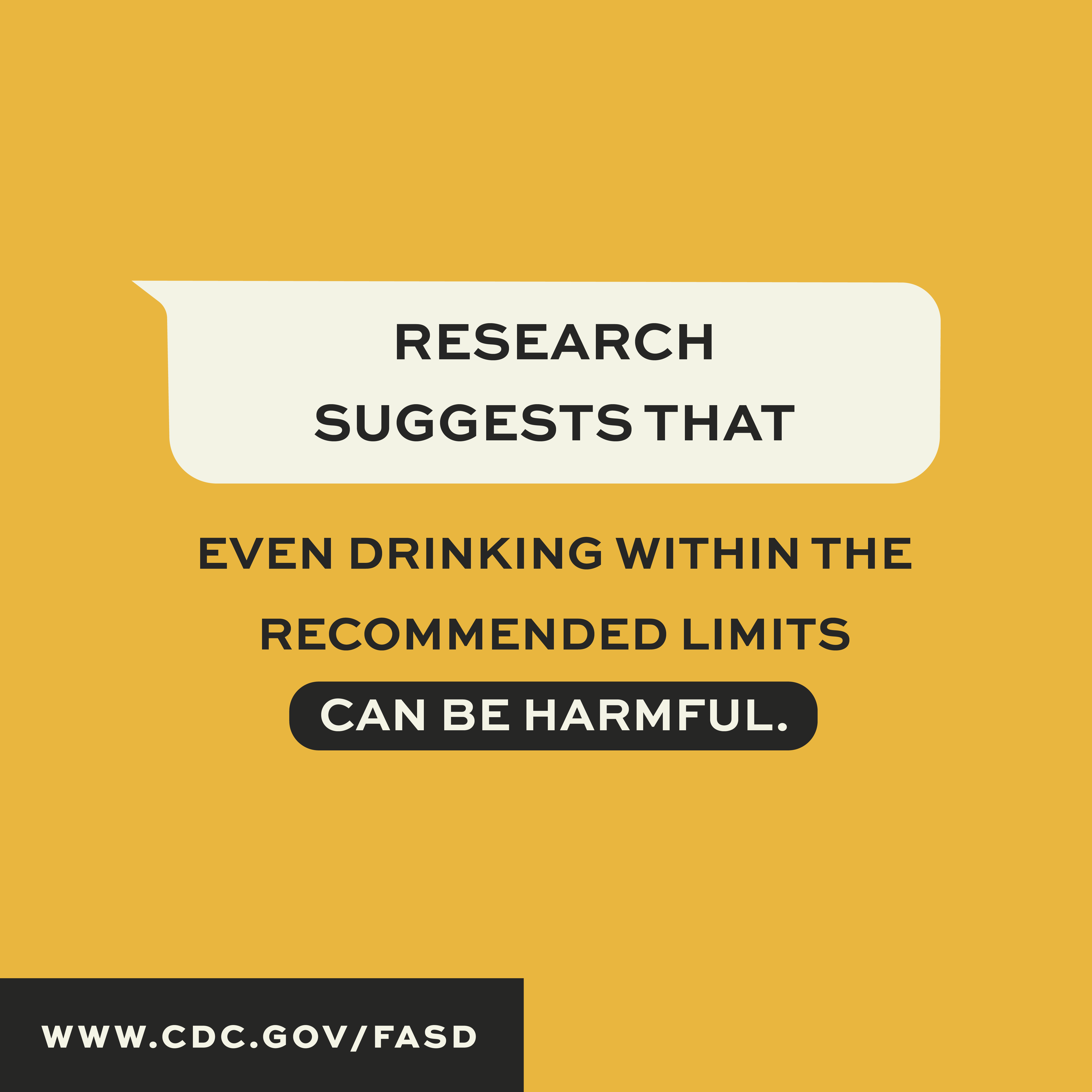 CDC's Let's Talk Materials
CDC's Let's Talk Materials
In 2023, ORAU developed a set of Let's Talk materials with the goals of improving patient-provider communication on the risks of alcohol use during pregnancy and supporting healthcare providers with incorporating alcohol screening and brief intervention (SBI) into their daily practices. This page provides a comprehensive listing of all Let's Talk materials, which are organized by audience. Other toolkit sections feature select materials from this page but organized by topic and/or format.
CDC encourages the use of Let's Talk materials by anyone interested in sharing evidence-based messaging about alcohol use during pregnancy, fetal alcohol spectrum disorders, and alcohol SBI.
Communication Guide and Promotion Toolkit
Communicating about Alcohol and Pregnancy: A Guide to Improve Patient-Provider Communication on the Risks of Alcohol Use During Pregnancy
Use this guide to support consistent communication with evidence-based messages. It includes highly rated messages, insights into HCP communication preferences, and links to materials and resources.

Improving Patient-Provider Communication on the Risks of Alcohol Use During Pregnancy
Use this toolkit to notify your networks about the Let’s Talk resources aimed at encouraging HCPs to conduct alcohol screening and brief intervention and equipping them to effectively communicate with patients about alcohol and pregnancy. It includes background on material development, product descriptions with suggestions for use, and email/newsletter templates.
Materials for Healthcare Professionals
Download all Let’s Talk materials developed for HCPs
Materials include fact sheets, badge cards, a video, and expert commentary.
Four fact sheets, each addressing a separate topic, serve as reference documents for HCPs. Fact sheets are available in full color and in B&W printer-friendly, plain text versions.
Fact Sheet 2: Let's Talk about Incorporating Alcohol SBI into Healthcare Practice
Fact Sheet 4: Let's Talk about Discussing Alcohol and Pregnancy with Patients
Laminate the print-ready cards (3.35” x 2.13” PDF) for HCPs to carry or attach to their badges for quick reference during clinical encounters. Or, integrate the smartphone optimized graphic (1080p x 1920p PNG) into your EMR or HCP resource webpages.
Badge Card 1: Opening a SBI Conversation and Brief Intervention Tips
Badge Card 2: Standard Drink Chart and Risky Drinking Levels
Badge Card 3: Facts to Help Female Patients Understand Health Impacts of Alcohol
Introduction to Alcohol SBI to Reduce Alcohol Use During Pregnancy
Video length: 6 minutes
Share this video in huddles, staff meetings, grand rounds, or other brief trainings
to
introduce Alcohol SBI to HCPs who are not yet doing it consistently or completely.
Support practice change by using the badge cards (above) along with the video.
Closed
caption (SRT file) and a plain text transcript (Word doc) are provided.

Expert Commentary Graphic
Include this article and digital graphic in your organization's newsletters, bulletins, and other communications with HCPs.
Materials for Patients
Download all Let’s Talk materials developed for Patients
Materials include infographics, videos, and message and graphic sets.
Share infographics as a large poster, single sheet handout, or digital graphic for various platforms (e.g., patient portal, text message reminders, email).
Infographic 1: Let’s Talk about Alcohol Use During Pregnancy
For patients who are or intend to be pregnant soon

Infographic 2: Let’s Talk about Alcohol Use
For patients who are not intending to be pregnant soon

Patient Article: Facts to Know About Alcohol and Pregnancy
Post this article on your website, blog, or other general public communication platforms.
Share these videos across a variety of communication platforms (e.g., text message reminders, websites, patient portals, social media). They take a cue from social media content (e.g., Instagram Reels and TikTok) and are optimized for mobile device viewing. A plain text transcript (Word doc) is provided.
Patient Video: 5 Things Your Doctor Wants You to Know about Alcohol and Pregnancy
Video length: 60 seconds
For patients who are or intend to be pregnant soon

Patient Video: 5 Reasons Your Doctor Might Ask How Much Alcohol You Drink
Video length: 90 seconds
For patients who are not intending to be pregnant soon

Waiting Room Video: Let’s Talk about What Everyone Should Know about Alcohol Guidelines and Pregnancy
Video length: 4 minutes
Share this animated video on digital monitors in office waiting areas and organizations’
digital communications (e.g., link in text message reminders, websites, patient portals,
social media). This video appeals to general audiences who can impact decisions about
alcohol use during pregnancy (e.g., relationship partners, grandparents) as well as
patients of reproductive age. Closed caption (SRT file) and a plain text transcript
(Word doc) are provided.

Share these message and graphic sets with general public audiences across various communications (e.g., text message reminders, emails, patient portals, social media, HCP-patient conversations). The message content fits length parameters of social media posts and text messages. Include a call to action and links to more information where appropriate (e.g., www.cdc.gov/fasd). Graphics are available in two sizes, and the 1080p x 1080p (square) graphics are intended to be posted together as an album/carousel.
Alcohol and Pregnancy Message and Graphic Sets
For patients who are or intend to be pregnant soon
Set #1
What are the risks of drinking alcohol while pregnant? Alcohol use during pregnancy increases the risk of miscarriage, stillbirth, preterm birth, SIDS, and fetal alcohol spectrum disorders (FASDs). FASDs can cause lifelong behavioral, intellectual, and physical disabilities. The good news is FASDs are completely preventable if a developing baby is not exposed to alcohol before birth.
Set #2
Trying to get pregnant? Alcohol use during pregnancy can harm a baby throughout pregnancy, including before you know you are pregnant. There is no known safe amount of alcohol use during pregnancy. There is also no safe time during pregnancy to drink. All alcohol can be harmful, including red or white wine, beer, and liquor. The safest thing to do is to avoid any type of alcohol use when you start trying to get pregnant.
Set #3
Some people say it is ok to drink a little bit of wine while pregnant. Is that true? Every pregnancy is different. Some babies may not be affected by alcohol during pregnancy, while others may have lifelong effects known as fetal alcohol spectrum disorders (FASDs). FASDs are not always easy to identify in a newborn, so you may not know right away if a baby has been affected by alcohol. The safest thing to do is avoid any type of alcohol use during pregnancy.
Set #4
Is it ok to drink alcohol while breastfeeding? Not drinking alcohol is the safest option when breastfeeding. Up to one standard drink in a day is not known to be harmful, especially if you wait at least two hours after a single drink before nursing. Talk to your healthcare provider if you are considering drinking alcohol while breastfeeding.
Alcohol and Health Message and Graphic Sets
For patients who are not intending to be pregnant soon
Set #1
Did you know alcohol can affect a pregnancy at any stage? During pregnancy, alcohol can pass from the pregnant person to the fetus and affect its development. Early in pregnancy, alcohol use increases the risk for miscarriage. In addition, the fetal brain and central nervous system develop throughout pregnancy and can be affected by exposure to alcohol at any point.
Set #2
Is drinking alcohol good for your health? New research suggests that even drinking within the recommended limits may increase the overall risk of death from heart disease and increase the risk of cancers of the mouth, throat, esophagus, liver, and colon. Alcohol use is also associated with breast cancer, even at low levels of drinking. Talk with your doctor about your alcohol use. Conversations about issues that may affect your health, like smoking, exercise, diet, and alcohol are part of high-quality health care.
Set #3
What are recommended alcohol limits? Nonpregnant adults of legal drinking age can choose not to drink, or to drink in moderation by limiting consumption to two drinks or less in a day for men, or one drink or less in a day for women, on days when alcohol is consumed. The guidelines are different for men and women because after drinking the same amount of alcohol, women tend to have higher blood alcohol levels than men, and the immediate effects of alcohol usually happen faster and last longer in women than in men.
Certain people should avoid alcohol completely, including people who are recovering from alcohol use disorder or are unable to control the amount that they drink, people who are pregnant or might be pregnant, and people younger than age 21.
Set #4
One in three U.S. adults drink in ways that put themselves or others at risk of harm. Many people are surprised to learn what counts as a drink, and that a glass of wine contains the same amount of alcohol as a shot of liquor. Have an open conversation with your doctor about your alcohol use to find out if drinking less could reduce your risk of health problems and help you meet your health goals.



















